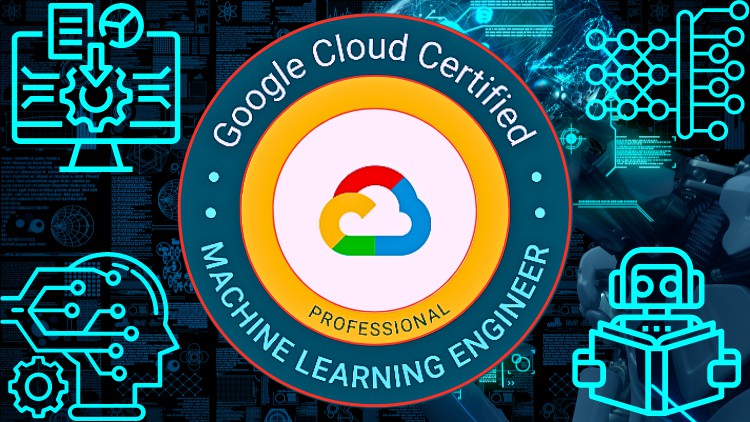Master ML Algorithms, Data Modeling, TensorFlow & Google Cloud AI/ML Services. 137 Questions, Answers with Explanations
Description
- Translate business challenges into ML use cases
- Choose the optimal solution (ML vs non-ML, custom vs pre-packaged)
- Define how the model output should solve the business problem
- Identify data sources (available vs ideal)
- Define ML problems (problem type, outcome of predictions, input and output formats)
- Define business success criteria (alignment of ML metrics, key results)
- Identify risks to ML solutions (assess business impact, ML solution readiness, data readiness)
- Design reliable, scalable, and available ML solutions
- Choose appropriate ML services and components
- Design data exploration/analysis, feature engineering, logging/management, automation, orchestration, monitoring, and serving strategies
- Evaluate Google Cloud hardware options (CPU, GPU, TPU, edge devices)
- Design architectures that comply with security concerns across sectors
- Explore data (visualization, statistical fundamentals, data quality, data constraints)
- Build data pipelines (organize and optimize datasets, handle missing data and outliers, prevent data leakage)
- Create input features (ensure data pre-processing consistency, encode structured data, manage feature selection, handle class imbalance, use transformations)
- Build models (choose framework, interpretability, transfer learning, data augmentation, semi-supervised learning, manage overfitting/underfitting)
- Train models (ingest various file types, manage training environments, tune hyperparameters, track training metrics)
- Test models (conduct unit tests, compare model performance, leverage Vertex AI for model explainability)
- Scale model training and serving (distribute training, scale prediction service)
- Design and implement training pipelines (identify components, manage orchestration framework, devise hybrid or multicloud strategies, use TFX components)
- Implement serving pipelines (manage serving options, test for target performance, configure schedules)
- Track and audit metadata (organize and track experiments, manage model/dataset versioning, understand model/dataset lineage)
- Monitor and troubleshoot ML solutions (measure performance, log strategies, establish continuous evaluation metrics)
- Tune performance for training and serving in production (optimize input pipeline, employ simplification techniques)
What you’ll learn
- Framing ML problems
- Architecting ML solutions
- Designing data preparation and processing systems
- Developing ML models
- Automating and orchestrating ML pipelines
- Monitoring, optimizing, and maintaining ML solutions
Who this course is for:
- Anyone wishing to get Google Cloud Certified Professional Machine Learning Engineer
CLICK TO JOIN WHATSAPP GROUP
CLICK TO JOIN TELEGRAM CHANNEL
